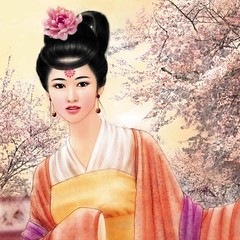The Four Great Ugly Women of China
Recently ChinesePod was preparing to do a podcast on some of the “Four Greats” (四大) of China [more info in Chinese]. If you’re not familiar with any of these, you might want to listen to the podcast (it’s free). Otherwise, a quick sum-up of some of the most famous ones will suffice:
- 四大发明 (the Four Great Inventions of Ancient China)
- the compass
- paper
- gunpowder
- printing
- 四大名著 (the Four Great Classic Literary Works)
- 红楼梦 (Dream of the Red Chamber)
- 西游记 (Journey to the West)
- 三国演义 (Romance of the Three Kingdoms)
- 水浒传 (Water Margin)
- 四大美女 (the Four Great Beauties)
- 西施 (Xi Shi)
- 王昭君 (Wang Zhaojun)
- 貂蝉 (Diao Chan)
- 杨玉环 (Yang Yuhan, AKA Yang Guifei)
The funny thing is that in addition to the “Four Great Beauties” (of ancient China), there are also “Four Great Ugly Women” (who don’t seem to have their own Wikipedia page):
- 四大丑女 (the Four Great Ugly Women)
- 嫫母 (Mo Mu)
- 钟离春 (Zhong Lichun)
- 孟光 (Meng Guang)
- 阮氏 (Ruan Shi)
I talked to a ChinesePod co-worker about these famous ugly women. The conversation went something like this:
> Me: So these women were so ugly that they went down in the history books just for that? Isn’t that kind of mean?
> Her: Well, they weren’t just ugly. They also had great talent.
> Me: Well, why not just call them “the four great women of talent” then?
> Her: Well, they were also ugly.
Point taken. Cultural lesson learned!


a very chinese answer, if I may say so. I dig.
No wikipedia page for the sidachounu but they have a baidu page:
http://baike.baidu.com/view/601622.html
how about this one?
http://en.wikipedia.org/wiki/Four_Arts_of_the_Chinese_Scholar
This post made me think of adjective order in English…you know, how you have to say “big red rubber ball,” not “rubber red big ball.” Basically, the adjective which is most inherent to that particular noun is positioned closest to the noun, i.e the ball is more “rubber” than it is “red” or “big.” So in Chinese culture, one’s personal beauty (or lack thereof) is a more inherent description of an individual than their talents? Interesting. Perhaps talents are easier to acquire than beauty.
nitpicky alert! Shouldn’t it be Yang YuHuan, not Yang YuHan?
哈哈, 很有意思!